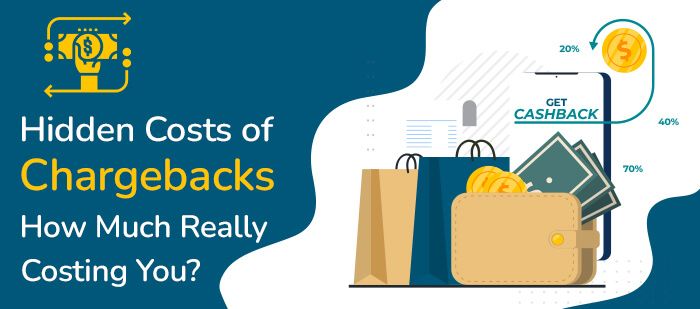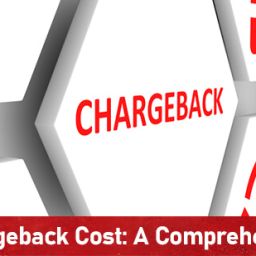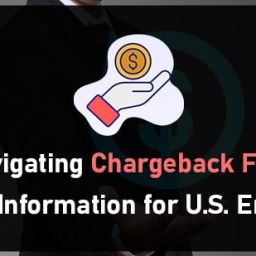
Chargebacks are often thought of as an unavoidable cost of doing business, but they can have a much larger impact on your bottom line than you may realize. When you understand the true hidden costs of chargebacks, it becomes clear just how much they are Really Costing You. From the fees you’re charged to the resources you expend trying to prevent them, chargebacks can quickly eat away at your profits. In this blog, we’ll explore what chargebacks are, the associated costs, and how to avoid them.
The Basics of Chargebacks
Chargebacks are a common occurrence in the business world, but what exactly are they? Simply put, a chargeback is a transaction reversal initiated by the cardholder or their bank. It occurs when a customer disputes a charge on their credit or debit card statement, and the funds are returned to their account. Chargebacks are often a result of fraudulent activity, dissatisfaction with a product or service, or a misunderstanding of the transaction. They can be initiated for various reasons, including unauthorized use of a card, non-receipt of goods or services, or dissatisfaction with the quality of the purchase.
Understanding the basics of chargebacks is crucial in order to grasp the full scope of their impact on your business.
Some Related Blogs
- 5 Tips for Fighting Travel & Hospitality Fraud with Chargebacks
- Steps to Resolve a Disputed Apple Cash Transaction
- The Rise of Events Ticketing Chargebacks: What You Need to Know
- How Auto Rental Chargebacks Affect Your Business: An Overview
The Direct Costs of Chargebacks
The direct costs of chargebacks can significantly impact your bottom line. These costs include the chargeback fees imposed by payment processors and the loss of revenue from the disputed transaction. Chargeback fees can range from $20 to $100 per occurrence, and they can quickly add up if you experience a high number of chargebacks. Additionally, when a chargeback is initiated, you not only lose the sale but also the cost of fulfilling the order and any associated shipping fees. This can be especially detrimental for businesses that operate on thin profit margins. It is essential to understand these direct costs in order to develop effective strategies for preventing and managing chargebacks.
The Indirect Costs of Chargebacks
In addition to the direct costs, chargebacks also come with a range of indirect costs that can have a significant impact on your business. One of the biggest indirect costs is the damage to your reputation and customer trust. When a chargeback occurs, it indicates that there was a problem with the transaction, whether it was due to fraud, dissatisfaction, or a misunderstanding. This can lead to negative reviews, lost future sales, and a damaged brand image.
Another indirect cost is the time and resources spent managing chargebacks. Dealing with the paperwork, investigations, and customer communication can be time-consuming and pull your team away from more important tasks. Additionally, the impact on your cash flow can be detrimental. The funds that are tied up in chargebacks could have been used for other business needs, such as inventory restocking or marketing efforts.
Overall, the indirect costs of chargebacks can be just as damaging as the direct costs. Understanding and addressing these costs is crucial for businesses to effectively manage and prevent chargebacks.
The Long-Term Effects of Chargebacks
The long-term effects of chargebacks can be far-reaching and can have a lasting impact on your business. One of the major long-term effects is the potential increase in chargeback ratios, which can lead to higher fees from payment processors or even the termination of your merchant account. This can make it more difficult and expensive for your business to accept credit card payments, ultimately hindering your ability to generate revenue.
Additionally, a high chargeback ratio can also damage your relationships with banks and acquiring partners, making it harder for you to secure favorable terms and rates for future payment processing services. This can limit your options and make it more challenging to find cost-effective solutions.
![]()
Email us anytime!
Email customer service 24/7
![]()
Call us anytime!
Reach customer care 24/7 at +1 (888) 901-8653
Moreover, the negative reputation and customer trust issues that come with chargebacks can have lasting effects on your business. Dissatisfied customers are more likely to share their negative experiences with others, both in person and online, which can deter potential customers from doing business with you in the future. This can lead to a decline in sales and growth opportunities.
Furthermore, chargebacks can also result in the implementation of stricter fraud prevention measures by payment processors and banks. While these measures are intended to protect businesses from fraud, they can also create additional barriers and complications for legitimate customers, potentially leading to decreased conversion rates and customer frustration.
Overall, the long-term effects of chargebacks go beyond the immediate financial costs. They can impact your ability to operate efficiently, maintain a positive reputation, and secure favorable business partnerships. It is essential for businesses to proactively address chargebacks and implement effective prevention strategies to minimize these long-term effects and protect their bottom line.
Strategies for Minimizing Chargeback Costs
There are several strategies you can implement to minimize the costs associated with chargebacks. First and foremost, it’s important to have a clear and transparent refund policy in place. Make sure your customers understand your return and refund process, and provide excellent customer service to address any issues promptly. By resolving disputes directly with customers, you may be able to prevent chargebacks altogether.
Secondly, consider using fraud prevention tools and services that can help detect and prevent fraudulent transactions. These tools can help reduce the number of chargebacks resulting from unauthorized card usage.
Furthermore, monitoring and analyzing chargeback data can provide valuable insights into the reasons behind chargebacks. By identifying trends and patterns, you can take proactive measures to address the underlying issues and prevent future chargebacks.
Lastly, consider partnering with a reputable payment processor that offers chargeback management solutions. These solutions can help streamline the dispute process and improve your chances of successfully challenging invalid chargebacks.
By implementing these strategies, you can minimize the costs associated with chargebacks and protect your business’s bottom line.




